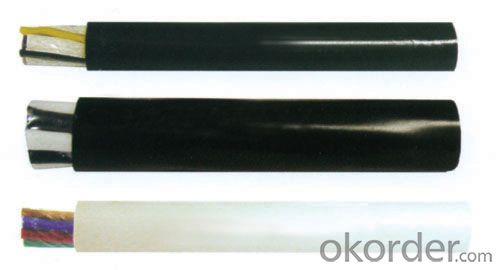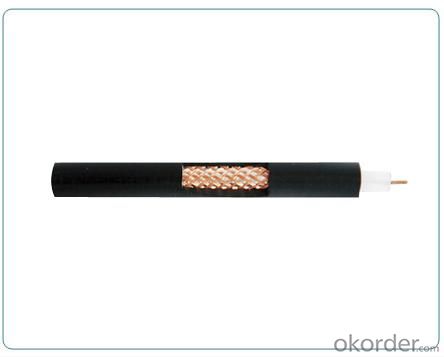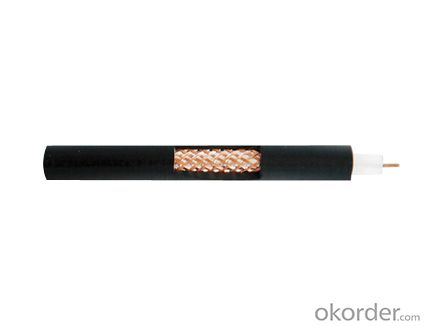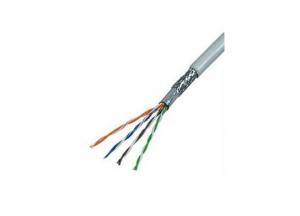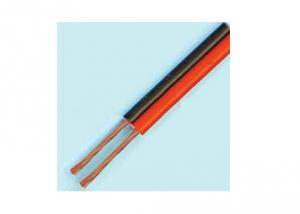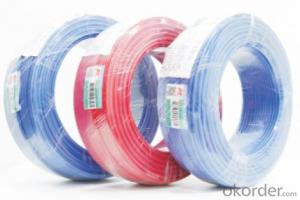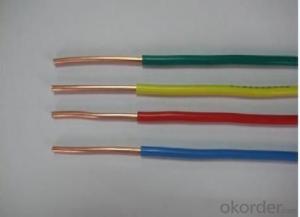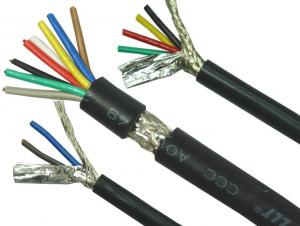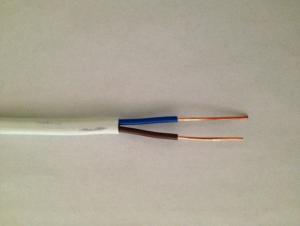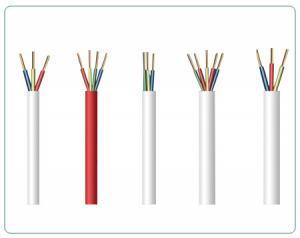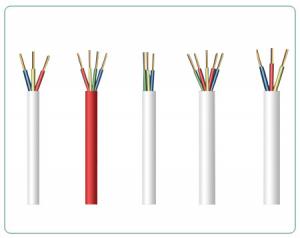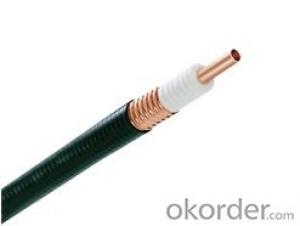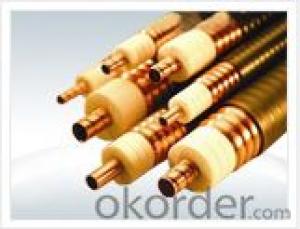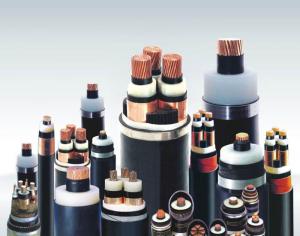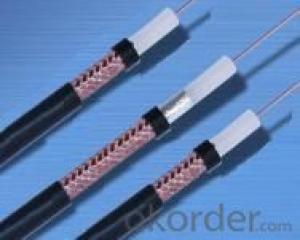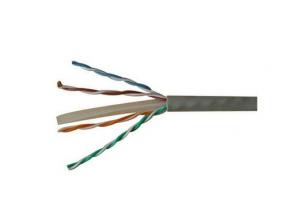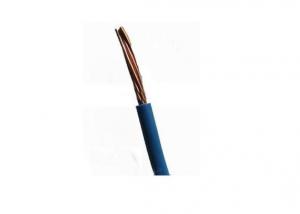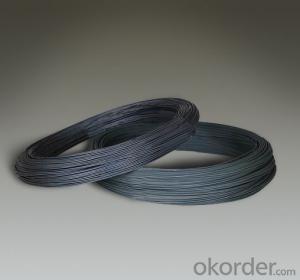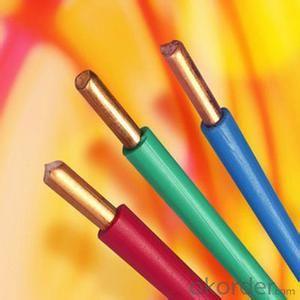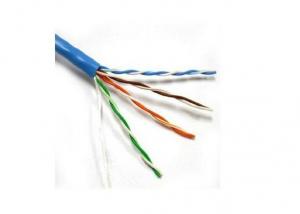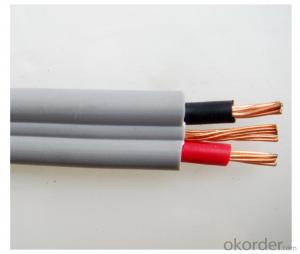Solid Coaxial Radio Frequence Cable
- Loading Port:
- Shanghai
- Payment Terms:
- TT or LC
- Min Order Qty:
- -
- Supply Capability:
- 1000000meters m/month
OKorder Service Pledge
OKorder Financial Service
You Might Also Like
Solid Coaxial Radio Frequence Cable
Product Description
Applications
The product is suitable for radio communication, broadcasting, signal-transmission for relevant electronic facilities, branch line and subscriber line for closed-circuit TV common antenna TV system, and other electronic units.
Executive Standard
The product is manufactured according to SJ standard of
Ministry of Electronics Industry
Types and Designation
Type | Designation |
SYV | Solid type PE insulated PVC. sheathed coaxial radio-frequency cable |
SF46F | Solid type exhaustive-fluorinated-ethylene-propylene insulated coaxial radio-frequency cable |
SFF | Solid type polytetrafluorethylene insulated and sheathed coaxial radio-frequency cable |
Type, size and technical feature
1. For SYV series, see table 1
2. For SF46F series, see table 2
3. For SFF series, see table 3
4. Explanation:
(1) Insulation outer diameter and characteristic resistance are rated values;
(2) Expressing method for type and size is "type-Characteristic resistance-Insulation outer diameter".
Operational Performances
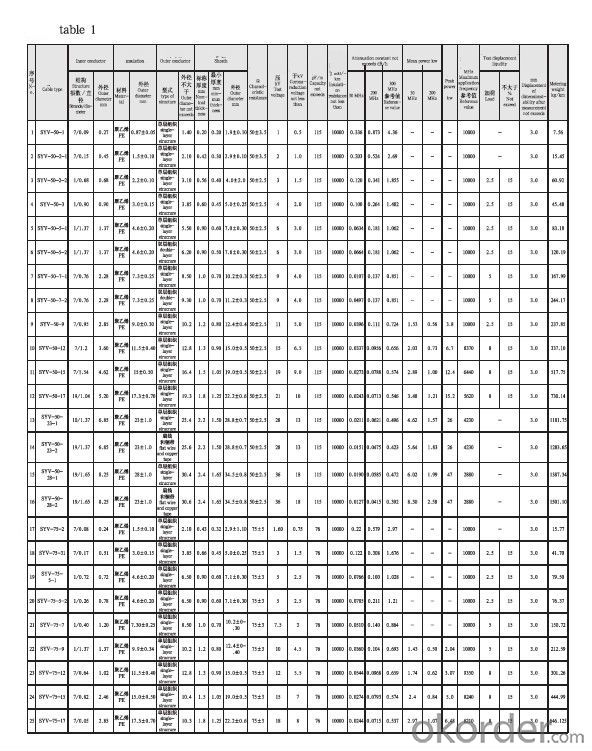
Picture
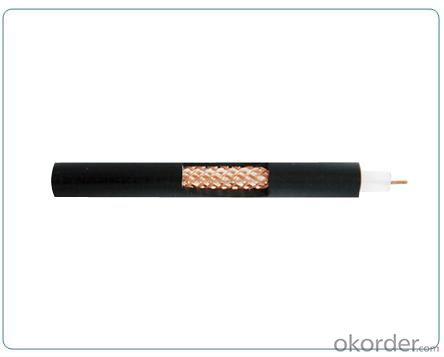
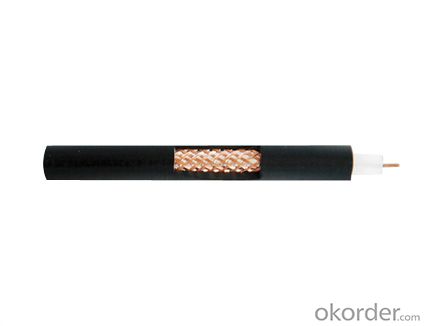
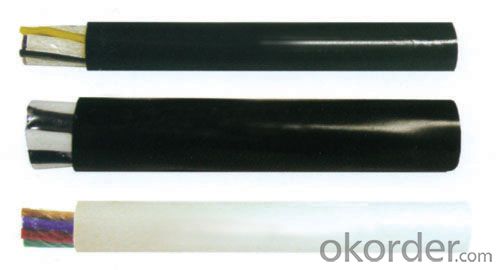
- Q: I have an antique light fixture that has wiring with a fabric cover. About how old is this? I was thinking 1920s.
- It had cloth covering up until the advent of usable plastics after WWII and plastic coatings on consumer products came along later than that I would say early 50's is when plastic insulated wiring came along. The conductors (wires) should be rubber insulated, and the pair is fabric insulated. Or are you talking a home that has two individual conductors that are ran on old spool type insulators, those are at the dawn of home electrical wiring and it depends on the fixture you have. If the conductors are paired and individually rubber coated, but the outer sheath is a fiberglass type materiel it could be as new as about 1950.
- Q: What is the phase voltage of the three alternating current lines?
- It can be used for voice system termination, can also be used as a data system termination
- Q: The socket has yellow and blue gray three colors, which is the line of fire? Which is the zero line? Which is the ground?
- Gray is the line of fire yellow is the blue line is zero line
- Q: Electrical Wiring for solar USB Charger with rechargeable battery?My goal is to have some sort of three way connection that would allow my charger to have the option of having power run from:A) the solar panel to the batteriesB) the solar panel to the USB female connectorC) the batteries to the USB female connectorwith one switch if possible,Currently I have a DPDT center off switch that allows me to control whether power to the USB is coming from the batteries or the solar panel. Is there a 4-position rotary switch that could give me the 3 different on positions and 1 off position? How would I wire this?
- Build okorder
- Q: I want to install an electrical outlet on a wall that doesn't have any other outlets. There is a wall light directly above the place where I need the outlet so I want to use that junction for the power source. I do not want the wall light's switch to control the outlet. How do I wire this?
- one way to do it would be to buy an inexpensive adapter that screws in like a light bulb and a light bulb screws into it and on each side of it is a plug in for stuff. it costs about 2 dollars and takes 2 seconds to install and it comes wif a pull chain too! the redneck tool shed light! I aint kidding they make em
- Q: What are the test requirements for the power cord?
- Yellow, green, red three colors, or called A, B, C three, or U, V, W phase, is the corresponding, three-phase voltage are 220V, line voltage of 380V, if the load is not balanced , Easy to burn the line. Hope to help you busy, man is a hydropower engineer, what questions, though looking for me.
- Q: I want to install two separate outdoor lights. How do I do that from one wire? How can I make one wire into two wires and what would I need? Thanks.
- You need 2 wires a positiv and ground. You need a complete circut. Make sure the power is off and strip the line to see if you have 2 wires inside. if not then seek good help otherwise you might just burn your flat down
- Q: I have an old farm house with 3 out buildings. The main house has electrical service. One out building has a circuit panel that then feeds to an out building and a barn. The out building with a circuit panel used to have separate electrical service but does not any longer. I would like to run a feeder line from the main house to the outbuilding circuit panel which would then provide power to the barn and additional out building. the distance between the two circuit panels is approximately 120'. there is a standard indoor line that runs most of the way. Can these two boxes be tied together at all? With the standard 12/2 line that is in place? What I would be running off this line is basically lights in the barn and 2-3 computers plus a space heater in the outbuilding.Any ideas?
- The 12/2 is not large enough to handle what you want to run in the remote locations. Start from the main panel and install a sub panel in there with room for 6 circuits. Feed the sub with a 50 amp circuit from the main panel and then run a new circuit to each of the out buildings. A 40 or 50 amp circuit to each will give enough power without the nuisance tripping that the 12/2 will develop. At each of the out buildings install a new 4 or 6 circuit panel. A direct burial cable is easy to install just dig more than 3 feet deep. Overhead means trees and equipment may damage the cables. For the direct burial cable run wire that is rated for 50 amps, use a 40 amp breaker to feed them. Trying to salvage the old installation is not worth the time or trouble. Contact a local qualified professional electrician to do the work. This would be much faster and then it will be done to current code specifications.
- Q: I am installing electrical wiring to an 8x12 portable building. I would like to have about five 110 outlets. One outlet will run a 5,000 btu ac. The other will run a small refrigerator. Can I run all this will a single 110 breaker?
- 1. You're not gonna be happy with the results you get from that AC unit. Without insulation, you'll basically be trying to cool the 'Great Outdoors. 2. Those two appliances will just about 'Max out' a single 20A. circuit. You'll be better off with a twp pole service. 3. Done right, electric service to a separate building requires a grounded service panel with it's own 'Main' and ground rod. 4 Out-door wiring needs special cable and protection. (Direct burial or UV rated if overhead.) 5. Convenience circuits will need to be GFI protected. 6. That's not all you need to know by any means. Get some advice from someone who knows what he's doing before you even start.
- Q: I am trying to install new electrical cooking controls into my kiln. the part is robert shaw inf-240-31b, or 5501-473. I drew a diagram of how it was attached to the wiring inside the kiln before i took it apart, but now that i have the new controls, and i am installing them, i realized that i left something out of my diagram. at the top of the control, there are three prongs sticking out. the first is labeled P, the second, L1, and the third, L2. however, when I drew my diagram, i only drew two prongs sticking out at the top, and did not label them in my sketch. there are two wires that need to be connected to the prongs. which two do I connect to the wires? and what to P, L1, and L2 represent?
- I am assuming that kiln uses 240 volts because it is high power. If instead it is gas fired then you are talking 120 volts just to safely open and close that gas valve. For 240 volts, L1 and L2 are typically the two live wires. For 120 volts L1 is usually the live wire and L2 usually the neutral. The third one must be a ground to keep you from getting a shock if live wires touch any metal on the outside of the control. Usually it does not make any difference for 240 volts where you connect L1 and L2. For 120 volts you need to get the live wire to the right place. For the 240 volts there is probably a switch symbol on the diagram that opens both wires for shutoff. For the 120 volts the switch is only in one of the wires and that is the L1 live one. If you are in doubt try phoning tech support at Robert-Shaw.
Send your message to us
Solid Coaxial Radio Frequence Cable
- Loading Port:
- Shanghai
- Payment Terms:
- TT or LC
- Min Order Qty:
- -
- Supply Capability:
- 1000000meters m/month
OKorder Service Pledge
OKorder Financial Service
Similar products
Hot products
Hot Searches
Related keywords





